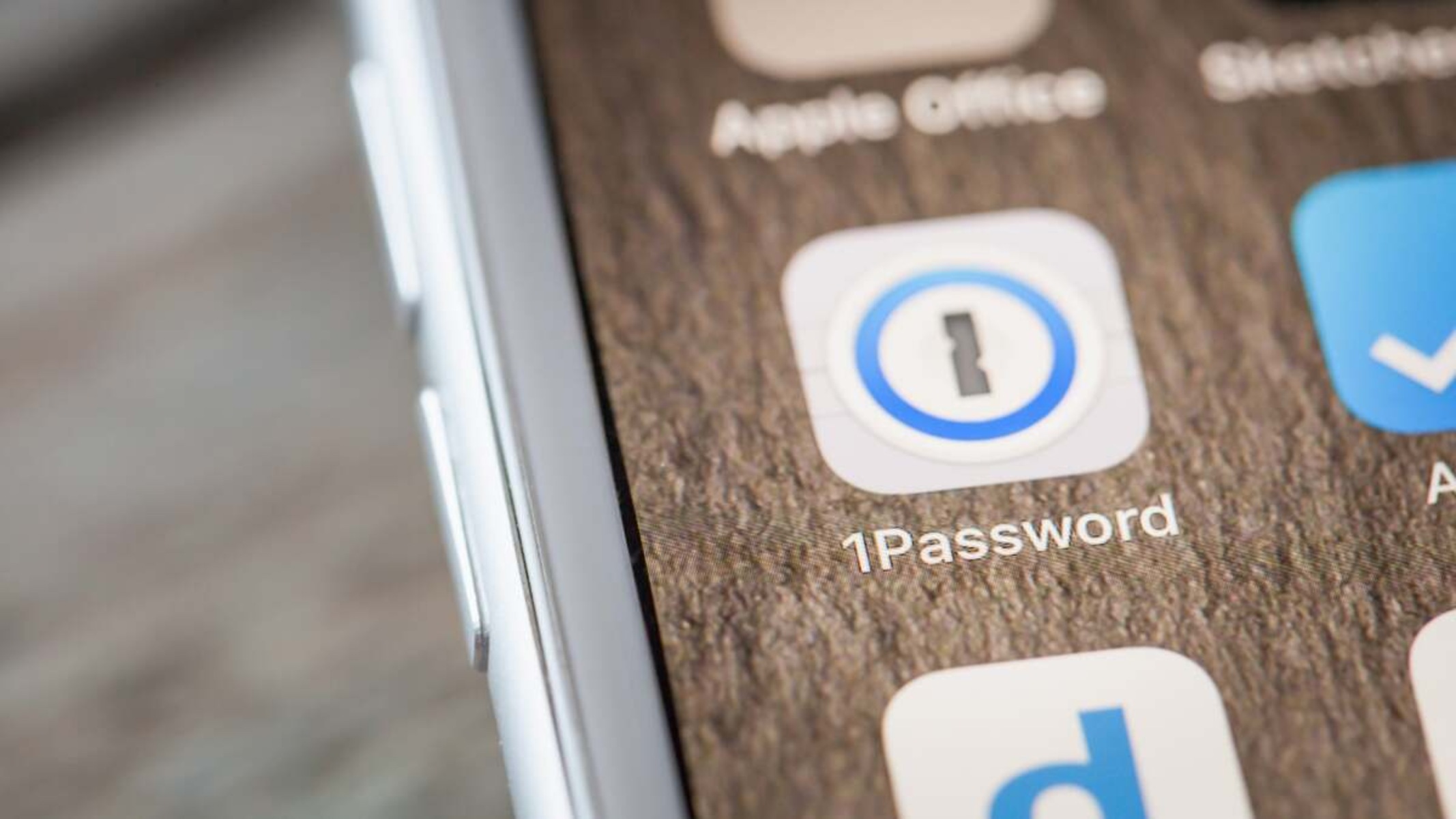Introduction
Safari, the default web browser for Apple devices, offers a seamless and secure browsing experience. One of its convenient features is the ability to save and autofill passwords for various websites, eliminating the need to remember complex login credentials. However, there are instances when users may need to view their saved passwords in Safari. Whether it's for retrieving a forgotten password or updating login information, knowing how to access and manage saved passwords can be incredibly useful.
In this article, we will delve into the process of viewing saved passwords in Safari. By following the steps outlined here, users can gain insight into their stored login credentials and take control of their online security. Whether you're a seasoned Safari user or new to the platform, understanding how to access and manage saved passwords can enhance your browsing experience and bolster your digital security.
Let's explore the steps to access Safari preferences and uncover the saved passwords within the browser. Whether you're using a Mac, iPhone, or iPad, the process remains consistent, ensuring that you can easily retrieve your passwords whenever the need arises. So, let's dive into the world of Safari preferences and discover the secrets to accessing and managing your saved passwords.
Accessing Safari Preferences
Accessing Safari preferences is the first step towards uncovering the saved passwords within the browser. Whether you're using a Mac, iPhone, or iPad, the process remains consistent, ensuring that you can easily retrieve your passwords whenever the need arises.
On Mac:
-
Launch Safari: Open the Safari browser on your Mac. You can find it in the Applications folder or by using Spotlight search.
-
Open Preferences: In the top menu bar, click on "Safari" and select "Preferences" from the dropdown menu. Alternatively, you can use the keyboard shortcut "Command + ," to directly access the Preferences window.
-
Navigate to Passwords Tab: In the Preferences window, click on the "Passwords" tab. You may be prompted to authenticate using your Mac's login credentials or Touch ID to access this sensitive information.
On iPhone or iPad:
-
Open Settings: Navigate to the home screen of your iPhone or iPad and tap on "Settings."
-
Scroll to Safari Settings: Scroll down and locate "Safari" in the list of apps. Tap on it to access the Safari settings.
-
Access Passwords: Within the Safari settings, tap on "Passwords." You may need to authenticate using your device passcode, Touch ID, or Face ID to proceed.
By following these steps, you can easily access the Safari preferences and prepare to view your saved passwords. This initial stage sets the foundation for uncovering the login credentials stored within the browser, allowing you to proceed with confidence and control.
Next, we will explore the process of viewing the saved passwords within Safari, shedding light on how to retrieve this valuable information effortlessly. Let's continue our journey into the realm of Safari's saved passwords and empower ourselves with the knowledge to manage our digital credentials effectively.
Viewing Saved Passwords
Once you have accessed the Safari preferences on your Mac, iPhone, or iPad, the next step is to view the saved passwords within the browser. This process allows you to retrieve and review the login credentials that Safari has securely stored for your convenience. Whether you're looking to retrieve a forgotten password or simply want to review your saved login information, accessing this data is essential for managing your online accounts effectively.
On Mac:
Upon navigating to the "Passwords" tab within Safari preferences, you will be presented with a list of websites for which Safari has saved your login credentials. Each entry typically includes the website's URL and your username, with the password obscured for security purposes. To view a specific password, follow these steps:
-
Select Website Entry: Scroll through the list of saved passwords and select the entry corresponding to the website for which you want to view the password.
-
Authenticate: To reveal the password, you will need to authenticate using your Mac's login credentials or Touch ID. This additional layer of security ensures that only authorized users can access the stored passwords.
-
View Password: Once authenticated, the obscured password will be revealed, allowing you to view and note it down if needed.
On iPhone or iPad:
In the Safari settings on your iPhone or iPad, accessing the saved passwords is similarly straightforward. Upon tapping on "Passwords," you will be prompted to authenticate using your device passcode, Touch ID, or Face ID. Once authenticated, you will be presented with a list of websites and their corresponding saved passwords. To view a specific password, follow these steps:
-
Select Website Entry: Tap on the entry for the website whose password you want to view.
-
Authenticate: Similar to the Mac process, you will need to authenticate using your device's security method to reveal the obscured password.
-
View Password: Once authenticated, the saved password will be displayed, allowing you to access and utilize it as needed.
By following these steps, you can effortlessly view the saved passwords within Safari, gaining access to the login credentials that the browser has securely stored. This knowledge empowers you to retrieve and manage your passwords effectively, ensuring a seamless and secure browsing experience across your devices.
Next, we will delve into the process of managing saved passwords within Safari, providing insights into how you can update, delete, or add new login credentials to further enhance your digital security and convenience. Let's continue our exploration into the realm of Safari's saved passwords, equipping ourselves with the tools to manage our online accounts with confidence.
Managing Saved Passwords
Managing saved passwords within Safari empowers users to take control of their digital security and streamline their online login experience. Whether it's updating outdated credentials, removing obsolete entries, or adding new passwords, Safari offers a straightforward process for managing saved passwords across Mac, iPhone, and iPad devices.
Updating Saved Passwords
When a user's login credentials for a specific website change, it's essential to update the saved password in Safari to ensure seamless access to the site. The process of updating a saved password involves accessing the Safari preferences and making the necessary modifications. Here's how to update a saved password:
-
On Mac:
- Navigate to Safari preferences and access the "Passwords" tab.
- Select the entry for the website whose password needs to be updated.
- Authenticate and edit the saved password to reflect the new credentials.
-
On iPhone or iPad:
- Access Safari settings and tap on "Passwords."
- Locate the entry for the website requiring a password update.
- Authenticate and update the saved password to align with the new login credentials.
By following these steps, users can effortlessly update their saved passwords in Safari, ensuring that their login information remains accurate and up to date.
Removing Saved Passwords
In situations where a user no longer requires a saved password for a specific website, removing the entry from Safari's saved passwords list is a prudent step. This process helps declutter the stored credentials and enhances security by eliminating unnecessary data. Here's how to remove a saved password:
-
On Mac:
- Within Safari preferences, navigate to the "Passwords" tab.
- Select the entry for the website from which the password should be removed.
- Authenticate and delete the saved password entry from the list.
-
On iPhone or iPad:
- Access Safari settings and tap on "Passwords."
- Locate the entry for the website from which the password needs to be removed.
- Authenticate and delete the saved password entry from the list.
By removing obsolete saved passwords, users can maintain a tidy and secure collection of stored credentials within Safari.
Adding New Saved Passwords
When users create accounts on new websites or update their login information, adding new saved passwords to Safari ensures convenient access to these sites. The process of adding a new saved password involves securely storing the updated login credentials within Safari. Here's how to add a new saved password:
-
On Mac:
- Within Safari preferences, navigate to the "Passwords" tab.
- Select the option to add a new saved password and enter the website's URL, username, and password.
- Confirm the addition of the new saved password entry.
-
On iPhone or iPad:
- Access Safari settings and tap on "Passwords."
- Select the option to add a new saved password and input the website's URL, username, and password.
- Confirm the addition of the new saved password entry.
By following these steps, users can seamlessly add new saved passwords to Safari, ensuring that their updated login credentials are securely stored for future use.
By understanding and implementing these methods for managing saved passwords within Safari, users can maintain an organized and secure collection of login credentials, enhancing their digital security and browsing convenience across their Apple devices.
Conclusion
In conclusion, the ability to access and manage saved passwords within Safari empowers users to take control of their digital security and streamline their online browsing experience. By delving into the Safari preferences and uncovering the stored login credentials, users gain valuable insights into their online accounts, ensuring that their passwords are secure, up to date, and easily accessible across their Apple devices.
The process of accessing Safari preferences, whether on a Mac, iPhone, or iPad, provides a consistent and intuitive pathway to view and manage saved passwords. By following the outlined steps, users can effortlessly navigate the browser's settings to retrieve their login credentials, update outdated passwords, remove obsolete entries, and add new saved passwords as needed.
Furthermore, the additional layer of authentication required to access and view saved passwords within Safari enhances the overall security of this feature. Whether using Mac login credentials, Touch ID, or Face ID on iPhone and iPad, Safari ensures that only authorized users can access and manage the stored passwords, bolstering the protection of sensitive login information.
By understanding the process of managing saved passwords within Safari, users can maintain a tidy and secure collection of stored credentials, enhancing their digital security and browsing convenience. Whether updating passwords for existing accounts or adding new saved passwords for recently created accounts, Safari offers a seamless and secure platform for managing login credentials across devices.
Ultimately, the knowledge and skills gained from this exploration into Safari's saved passwords empower users to navigate the digital landscape with confidence and control. By leveraging the capabilities of Safari to securely store and manage passwords, users can optimize their online security and enjoy a seamless browsing experience across their Mac, iPhone, and iPad devices.
In essence, the ability to access and manage saved passwords within Safari is not only a practical feature but also a fundamental aspect of maintaining a secure and efficient online presence. By embracing the insights shared in this article, users can harness the power of Safari's saved passwords to enhance their digital security and streamline their browsing experience, ensuring that their online accounts remain protected and easily accessible whenever needed.

























